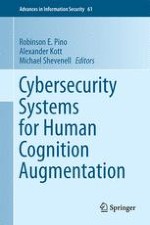2014 | OriginalPaper | Buchkapitel
6. Dynamic Logic Machine Learning for Cybersecurity
verfasst von : Leonid Perlovsky, Olexander Shevchenko
Erschienen in: Cybersecurity Systems for Human Cognition Augmentation
Aktivieren Sie unsere intelligente Suche, um passende Fachinhalte oder Patente zu finden.
Wählen Sie Textabschnitte aus um mit Künstlicher Intelligenz passenden Patente zu finden. powered by
Markieren Sie Textabschnitte, um KI-gestützt weitere passende Inhalte zu finden. powered by
